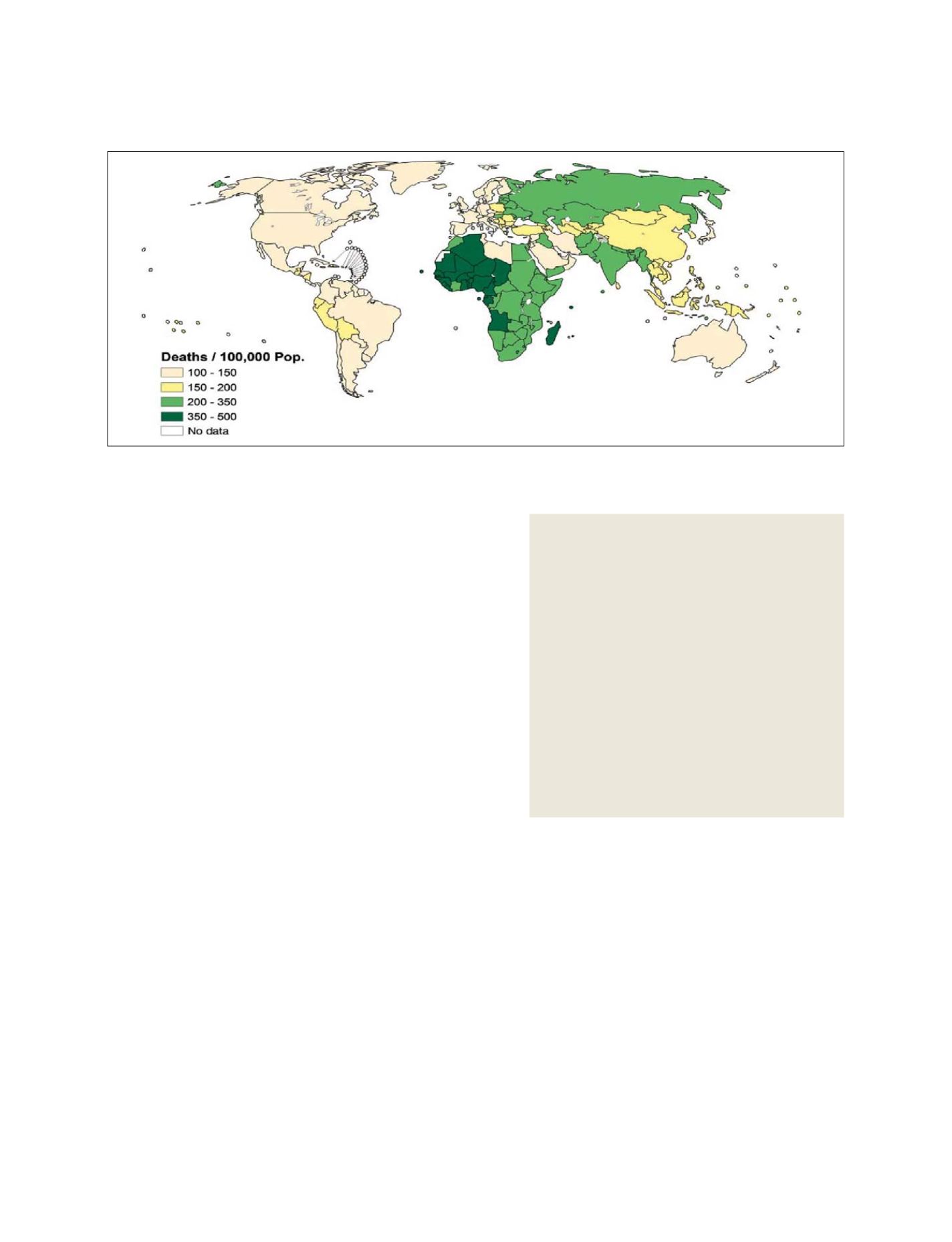

[
] 183
We live in a fast-paced, dynamic period of globaliza-
tion. Along with the increasing interdependence of
economies, politics, and technology, we are also experi-
encing the rise of emerging and re-emerging disease.
International travel and commerce, human behaviour
and manmade changes to the environment all together
contribute to the current problem of emerging and re-
emerging diseases.
Not long ago, we thought that DDT was the silver
bullet that would wipe away malaria, but today, it
continues to affect more than 300 million people and
cause more than a million deaths every year. We need
new approaches and solutions to this and other age-old
problems. The US EPA is taking an interdisciplinary
approach that looks at the wider picture of human-envi-
ronment-disease interactions, and we hope, providing
one new, positive way forward.
be problems in certain parts of the world, can reveal social and environ-
mental factors that are important contributors to disease. These factors
present new opportunities to reduce disease through improved policy
and management.
A unique GEOSS approach: US EPA’s interdisciplinary initiative
While studies indicate that changes in biodiversity can affect infectious
disease transmission to humans, more research is needed if decision
makers are to consider biodiversity change as a factor in predicting risks
to human health. In response, the US EPA has added to GEOSS a new
interdisciplinary program to better understand the scientific relationship
between human stressors (such as climate change and deforestation),
changes in biodiversity and disease transmission to humans.
In September 2006, in co-sponsorship with Yale’s Center for
EcoEpidemiology, the Smithsonian Institution, and the World
Conservation Union, GEO and the US EPA launched the ‘Biodiversity
and Health initiative’ by bringing together researchers, practitioners, and
decision makers in ecology, public health, social sciences and the earth
sciences. This is one of the few international programs that brings
together these various disciplines and encourages the coordination of
earth observations with experimental field data in order to study biodi-
versity and health.
Every discipline constitutes a vital contribution. For example, ecolo-
gists and population biologists can help describe the environmental
factors affecting animal hosts and vectors of disease. Earth scientists can
play an important role in understanding animal and vector population
density related to land cover features through the use of real-time Earth
observations. Epidemiologists can contribute knowledge on disease life
cycles and how diseases spread to and among humans. Social scientists
can identify the human behaviour that affects biodiversity and health as
well as strategies to encourage human behaviour to protect the environ-
ment and human health. Economists can put a monetary value on
biodiversity as it relates to disease reduction.
This innovative approach built onmultidisciplinary collaboration can
lead to better and faster uses of new knowledge to reduce disease and
protect the environment. The US EPA is working with US Federal part-
ners and international organizations to advance this work.
Figure reproduced from ‘Preventing Disease Through Healthy Environments,’ by A. Pruss-Ustun and C. Corvalan, World Health
Organization, copyright 2006, with the permission of the World Health Organization
The map above shows the estimated global disease
burden, measured in deaths per 100,000 population for
the year 2002. The largest difference between regions is
in infectious diseases, with the burden suffered as a result
of environmental factors 15 times greater in developing
countries than in developed countries. The World Health
Organization (WHO) has estimated that 24 per cent of the
global disease toll and 23 per cent of all deaths can be
attributed to environmental factors such as poor water
quality, air pollution, man-made climate change, and
policies and practices regarding water resource
management. These environmental factors are considered
‘modifiable’ in that they can realistically be changed using
existing technologies, policies, and preventive and public
health measures. This analysis does not include how
changed or damaged ecosystems may contribute to
disease, so these global estimates are likely to be
conservative.
(Source: World Health Organization)
Environmental Disease Burden
S
OCIETAL
B
ENEFIT
A
REAS
– H
EALTH
















